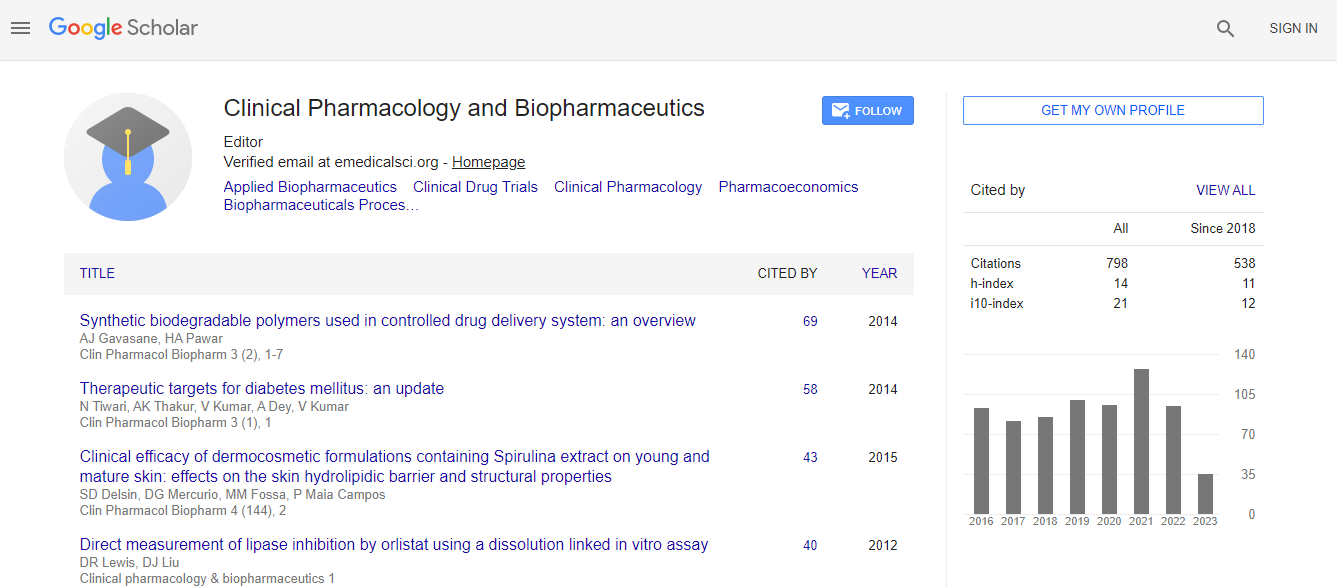Our Group organises 3000+ Global Events every year across USA, Europe & Asia with support from 1000 more scientific Societies and Publishes 700+ 91�Թ� Journals which contains over 50000 eminent personalities, reputed scientists as editorial board members.
91�Թ� Journals gaining more Readers and Citations
700 Journals and 15,000,000 Readers Each Journal is getting 25,000+ Readers
Citations : 1089
Indexed In
- CAS Source Index (CASSI)
- Index Copernicus
- Google Scholar
- Sherpa Romeo
- Genamics JournalSeek
- RefSeek
- Hamdard University
- EBSCO A-Z
- OCLC- WorldCat
- Publons
- Euro Pub
- ICMJE
Useful Links
Recommended Journals
Related Subjects
Share This Page
Development and validation of rapid colorimetric reverse transcription loop-mediated isothermal amplification for detection of rift valley fever virus
5th International Conference and Exhibition on Pharmaceutical Development and Technology
Dr. Francis Chaka Wekesa
Kenyatta University, Kenya
ScientificTracks Abstracts: Clin Pharmacol Biopharm
Abstract
Rift Valley fever virus (RVFV) is a high-priority zoonotic pathogen with the ability to cause massive loss during its outbreak within a very short period of time. Lack of a highly sensitive, instant reading diagnostic method for RVFV, which is more suitable for on-site testing, is a big gap that needs to be addressed. The aim of this study was to develop a novel one-step reverse transcription loop-mediated isothermal amplification (RT-LAMP) method for the rapid detection of RVFV. To achieve this, the selected RVFV M segment nucleotide sequences were aligned using Multiple Sequence Comparison by Log-Expectation (MUSCLE) software in MEGA11 version 11.0.11 program to identify conserved regions. A 211 pb sequence was identified and six different primers to amplify it were designed using NEB LAMP Primer design tool version 1.1.0. The specificity of the designed primers was tested using primer BLAST, and a primer set, specific to RVFV and able to form a loop, was selected. In this study, we developed a single-tube test based on calorimetric RT-LAMP that enabled the visual detection of RVFV within 30 minutes at 65�?°C. Diagnostic sensitivity and specificity of the newly developed kit were compared with RVFV qRT-PCR, using total RNA samples extracted from 118 blood samples. The colorimetric RT-LAMP assay had a sensitivity of 98.36% and a specificity of 96.49%. The developed RT-LAMP was found to be tenfold more sensitive compared to the RVFV qRT-PCR assay commonly used in the confirmatory diagnosis of RVFV.Biography
Dr. Francis Chaka Wekesa completed his PHD in biotechnology and curently working in Kenya Agricultural and Livestock Research Organization | KALRO • Department of Biotechnology

